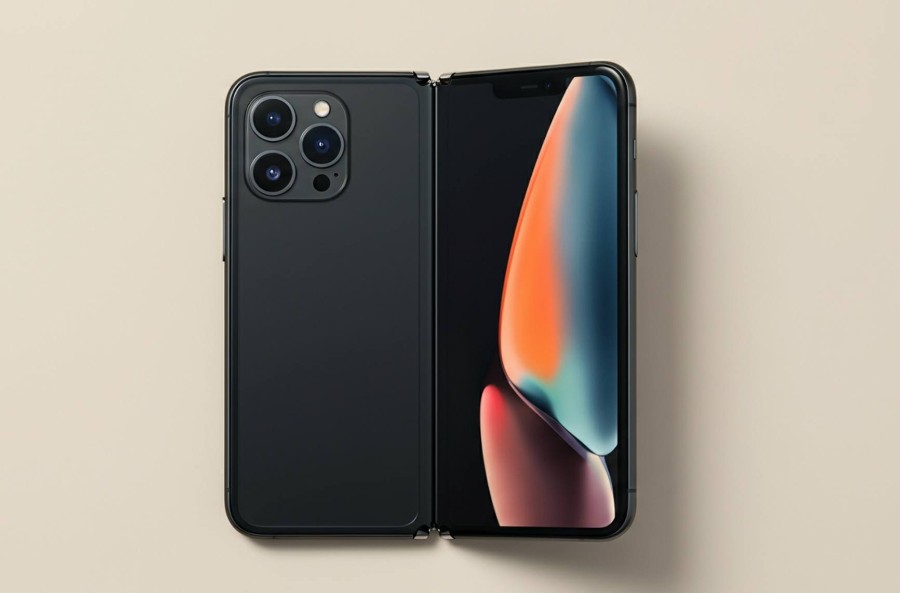Posted: Sunday, July 13, 2025
The iPhone Fold: An Anticipated Dream
Apple’s Folding Marvel or a $2,500 Gimmick?

A dual 48MP rear camera setup with a hint of AI-enhanced imaging—likely wide and ultra-wide—will catch the attention of photographers.
Apple seems ready to reveal its answer to the Galaxy Z series, combining that seductive fusion of style, status, and technological aspirations. The iPhone Fold is a gadget that could be considered either an expensive origami project or Cupertino's next big invention.
It is expected that Apple's foldable smartphone will have a 5.5-inch cover screen and a 7.8-inch internal OLED display. According to rumors, Apple's engineers are fighting the crease with futuristic materials and a hinge mechanism that is as precise as NASA. It will be beautiful if it succeeds. If not, it will still sell millions of copies and probably become known as "Foldgate."
Rumor has it that Apple engineers are using cutting-edge materials and a hinge mechanism as accurate as NASA to combat the crease.
Design-wise, anticipate liquid-metal parts, titanium edges, and a slimness that rivals paper when fully opened. Apple seems to have sought to design a gadget that is both sturdy enough to withstand a fall and small enough to fit under a door. Apple's trademark—and sometimes its undoing—is this harmony between style and functionality.
On the inside, the iPhone Fold may run on the upcoming A20 Pro chip, a potent silicon engine built to handle multitasking, productivity, and high-performance gaming—all while consuming battery life as sparingly as a good cup of coffee. Early disclosures about the batteries indicate that the iPhone Fold will be able to run all day without overheating like a tiny oven thanks to stacked cells that were modified from the iPad line.
Photographers will notice a dual 48MP rear camera setup with a hint of AI-enhanced imaging, most likely wide and ultra-wide. Rumor has it that the front camera will be situated beneath the internal display, and Touch ID built into the side button may take the place of Face ID. Depending on the presentation you're watching, this choice appears to either represent innovation or compromise.
Anticipate titanium edges, liquid-metal components, and a slimness that rivals paper when fully opened.
The success of the iPhone Fold may depend on the software. Rumor has it that Apple will incorporate features from iPadOS, such as drag-and-drop, split-screen, and multi-tasking gestures, into the iPhone's interface. This might sound revolutionary or like the early Stage Manager implementations—basically, a demo that works well in Apple Park but breaks down elsewhere.
At least not immediately, there is currently no expectation of support for the foldable Apple Pencil. Don't worry, though; there will probably be one soon with magnetic charging, new color options, and a $129 separate price tag. Apparently, there is a price for true innovation.
How much does it cost? We shouldn't fool ourselves about Apple's lack of humility. If the iPhone Fold doesn't release a diamond-studded version for cryptocurrency enthusiasts, it will be the most expensive iPhone ever when it launches, with a price range of $2,000 to $2,500. Tim Cook's strategic presentations are supposed to be aspirational, but the word "aspirational" somehow rhymes with "unrealistic."
Apple's most ambitious project, the iPhone Fold, has the potential to quickly legitimize foldables if it can offer a crease-free display and seamless OS integration.
The iPhone Fold might be Apple's most audacious project since doing away with headphone jacks and acting like it took some courage, it could quickly legitimize foldables if it is able to provide a crease-free display and seamless OS integration. If it doesn't work? Well, Apple still prevails—because even when their offerings bend, their devoted fanbase remains unwavering.